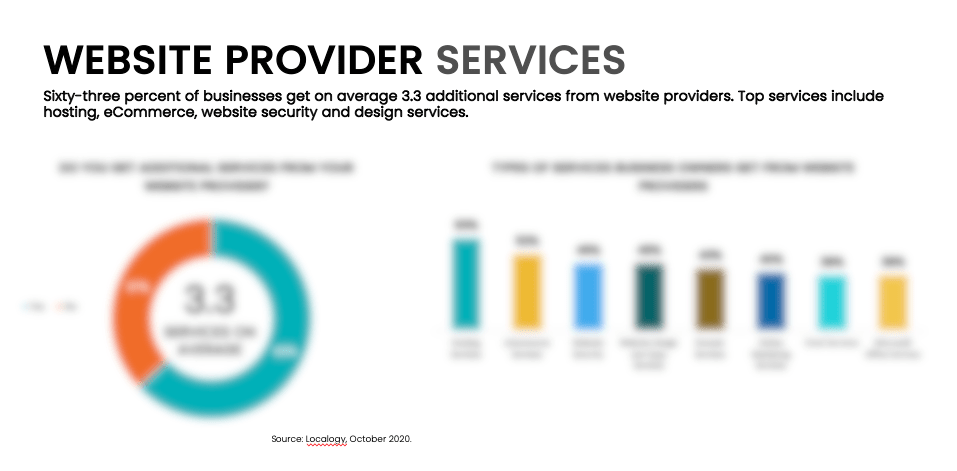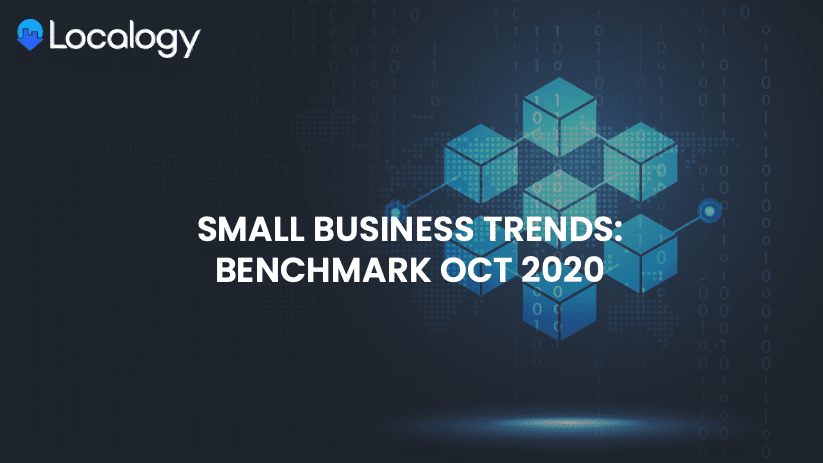After examining SMB website dynamics in our Website Windup series, and in roundtable discussions with thought-leading investors, we decided to go right to the source: SMBs themselves. How do they feel about websites? What features do they want? And do they upsell to adjacent services?
Localogy’s latest Small Business Trends report answers these and other questions across the SMB SaaS product set, which we examine one-by-one in this Benchmark Bytes series. After the last installment that examined SMB likeliness to enlist agencies versus DIY, we shift attention to additional services
First, for context, we’ll reiterate the last installment’s data. 54 percent of SMBs with 50 or more employees enlist the services of agencies to manage their website presence. 29 percent of businesses with 26-50 employees do so, and it tapers off from there as headcount shrinks.
On to today’s topic, to what degree do SMBs rely on their website provider to get other services? We’re talking everything from hosting to graphic design. According to the survey, 63 percent of SMBs utilize their website provider for these adjacent services. And the average number of services is 3.3.
As for the types of services, 63 percent of SMBs buy hosting services, 52 percent eCommerce services, 46 percent website security, 46 percent website design and copy services, 43 percent domain services, 40 percent online marketing, 38 percent email, and 38 percent Microsoft Office.

What Does it All Mean?
Going a bit deeper, a few things jump out at us:
— Most of the adjacent services utilized are logical extensions of websites, including hosting and domain services.
— Others aren’t as related but nonetheless point to websites as the starting point for online presence, marketing, and commerce.
— eCommerce’s prevalence as the second-highest utilized adjacent service is telling of the opportunity to broaden SMB relationships after they get started with a website. This factor is coupled with eCommerce’s overall growth in the Covid era.
— Many of these adjacent services have greater margins than websites, representing an opportunity for website providers to boost profitability by bundling.
— The same goes for email and online marketing services as these can be deeper and ongoing relationships, especially given recurring revenue and high SMB switching costs for eMail
— Beyond marketing and commerce, a few of these adjacent services represent operational needs, such as site security and Microsoft Office Services. These are practical needs of day-to-day operations, meaning websites can be an onramp to more than just marketing products.
— Lastly, 63 percent of SMBs utilizing website providers for additional services is strong. But it also indicates head-room, as there’s still 37 percent of SMBs that don’t.
Training Wheels
As these data indicate, websites continue to be the “tip of the spear,” for SMB marketing. They’re often the first step into digital marketing, followed by other formats. This is generally due to the cost/benefit ratio, given the falling cost of web hosting and escalating standards of website builders.
Websites can also be the base ingredient to get in the game for SEO, social amplification, and other areas (not always the case). This is the reason many website providers are expanding their bundles to deepen SMB relationships with higher-margin products like those listed above.
This of course has gone into hyperdrive in the Covid era as SMBs have been forced to accelerate their digital transformation as a survival imperative. This often sends them into the arms of website builders as an onramp to the many other things they need to accomplish… eCommerce being most prominent.
We’ll return in future installments to go deeper, including other factors like what types of marketing services these website customers are upgrading to. Let us know what additional insights jump out at you from the above data, and stay tuned for more data breakdowns in our Benchmark Bytes series.





